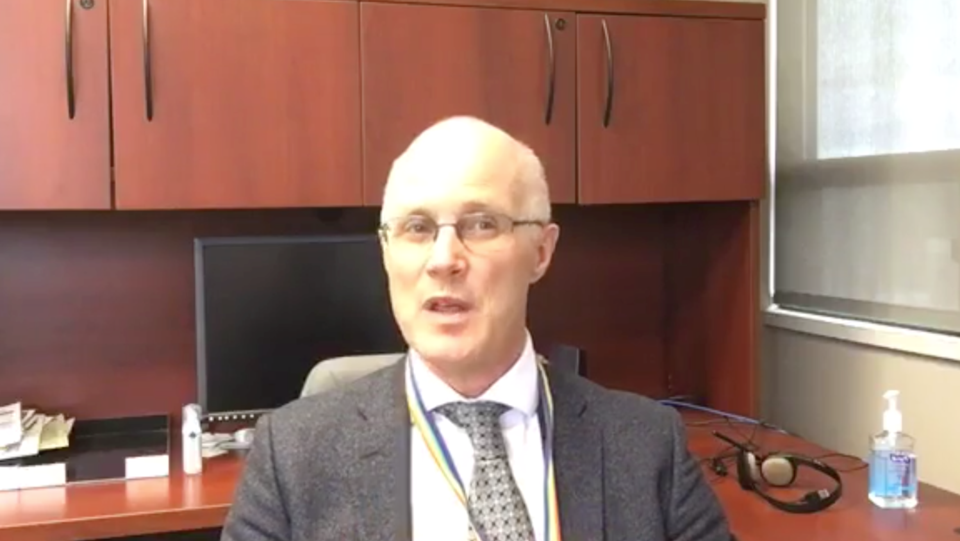Though the region is still seeing between nine and 11 new lab-confirmed cases of COVID-19 every day, the region’s medical officer of health says the data shows the spread of the virus is slowing in the region.
Dr. Charles Gardner, Simcoe Muskoka District Health Unit’s medical officer of health said the health unit epidemiological curve is now showing a “fairly flat pattern of plateauing.”
“Which is exactly what we want to see,” he said. “We want to see this contained and not continuing to surge upward.”
The region’s doubling time - that is the amount of time it takes for the number of infected people to double has increased from 7.2 days a week ago to 14.3 days now.
“That’s certainly moving in the right direction,” said Gardner. “That’s one of the indicators that we’re improving.”
He said by his calculations the province is also showing signs of a slowing spread with the doubling time at 9.1 days now, down from 5.1 days a week ago.
“That’s a tribute to everybody’s work together to achieve that,” said Gardner.
But he isn’t ready to say the time has come for more relaxed measures, in fact, the health unit is continuing to prepare for a potential surge in cases.
Gardner said they have hired and recruited more nurses and health care workers to be ready for deployment or in training by the end of the month. They will be working as contact and case tracers.
“It’s only prudent and wise for us to make sure we’re ready if we do get more of a surge,” he said. “We want to be ahead of things ourselves and not get caught behind.”
Hospitals in the area are also preparing for a potential surge. In Owen Sound local health services are setting up a field hospital at an arena.
Collingwood Mayor Brian Saunderson said today there will be work soon to set up something similar in Collingwood. Two weeks ago the hospital confirmed it has a contingency plan for more space off-site.
As for when the region or the province will reach a peak number of cases or will start seeing a downward trend in daily case reports, Gardner said he can’t answer that.
“Modelling, and data coming from other locations … suggests it is weeks yet before the present wave of this pandemic peaks, abates and goes down,” said Gardner. “Then there’s a potential for it to come back again.”
Gardner expects there will be future waves of the virus.
“If the majority of the population has not become infected with this … then we remain vulnerable to this in the future,” he said.
The health unit has confirmed a total of 185 tests in the region so far, but of those 12 people have died and 82 people have recovered.
The health unit does follow up on close contacts of those who have been confirmed positive, but not all close contacts have been or will be tested. Gardner said he doesn’t provide the number of close contacts in self-isolation.
There are 10 people in hospital including four at Royal Victoria Regional Health Centre, four at Southlake Regional Health Centre, and one at Stevenson Memorial Hospital. The other hospitalized case is “under investigation.”
Of the 10 hospitalized patients, six are in intensive care units. Gardner didn’t have data on how many are currently on ventilators.
The largest transmission source for cases in the region is now community transmission, which is attributed to 53 of the total 185 cases. There were 50 cases with a history of travel and 40 considered close contact transmission. There are 28 cases associated with the long-term care outbreak at Bradford Valley, another six cases marked “undetermined” and there are eight more “under investigation.”
According to Gardner, there are likely many more people in the community who have COVID-19 and are transmitting the virus with few to no symptoms.
Gardner reiterated his earlier message to encourage people to get tested if they can, even with a single symptom.
“There’s never a doubt in my mind that, with surveillance, you see the tip of the iceberg,” said Gardner. “The more extensive the testing you do, the more we can be assured we’re getting more of it. You’ll never have it all.”



